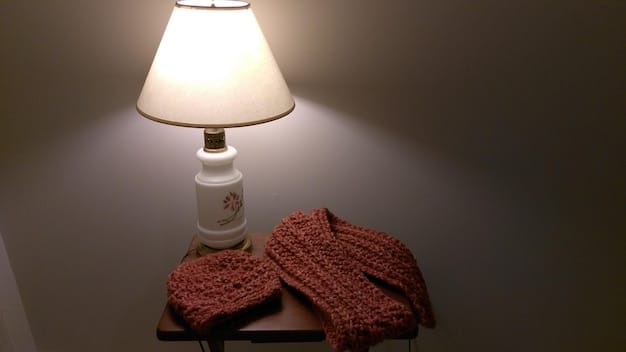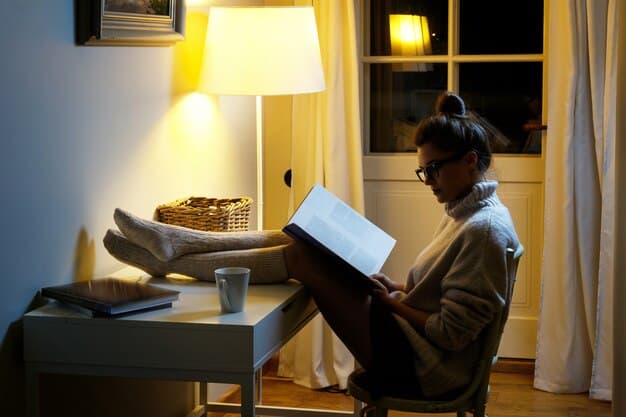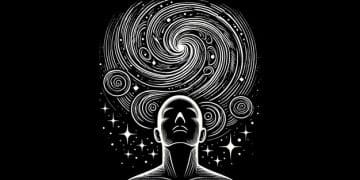Combat SAD: 5 Expert-Recommended Light Therapy Lamps for Winter 2025

Seasonal Affective Disorder (SAD) can significantly impact well-being during colder, darker months, with light therapy emerging as a highly effective, non-pharmacological intervention recommended by experts to alleviate symptoms and improve mood.
As the days grow shorter and the vibrant colors of autumn fade into the muted palette of winter, many individuals experience a shift in their mood and energy levels. For some, this transition heralds the onset of Seasonal Affective Disorder (SAD), a recurring major depressive disorder characterized by symptoms like low energy, sleep disturbances, and feelings of sadness or hopelessness. Fortunately, advancements in wellness technology offer promising solutions. This article delves into how to Combat Seasonal Affective Disorder: 5 Light Therapy Lamps Recommended by Experts for Winter 2025, providing insights into their efficacy and helping you navigate the options available for a brighter winter.
Understanding Seasonal Affective Disorder (SAD) and Its Impact
Seasonal Affective Disorder, often referred to as SAD, is more than just feeling down during winter; it’s a clinically recognized form of depression linked to seasonal changes. Typically, symptoms begin in late autumn or early winter and remit in spring or summer. The precise causes are not fully understood, but it’s believed to be related to changes in the body’s circadian rhythm, which is influenced by exposure to natural light. Reduced sunlight during winter months can disrupt this rhythm, leading to imbalances in neurotransmitters like serotonin and melatonin.
The impact of SAD can be profound, affecting various aspects of daily life. Individuals might experience persistent fatigue, making it difficult to concentrate or complete tasks. Changes in appetite, often leading to carbohydrate cravings and weight gain, are also common. Social withdrawal and a general lack of interest in activities that were once enjoyable can further isolate sufferers. Recognizing these symptoms is the first crucial step toward effective management.
The Neurobiology Behind SAD
Research suggests that a key player in SAD is the brain’s regulation of serotonin, a neurotransmitter that affects mood. Lower levels of sunlight can lead to a drop in serotonin, contributing to feelings of depression. Concurrently, melatonin, a hormone that regulates sleep, can be overproduced in individuals with SAD due to prolonged darkness, causing lethargy and excessive sleepiness.
- Serotonin Imbalance: Reduced sunlight can decrease serotonin levels, impacting mood regulation.
- Melatonin Overproduction: Increased darkness can lead to higher melatonin, causing lethargy.
- Circadian Rhythm Disruption: Changes in light exposure throw off the body’s natural sleep-wake cycle.
Understanding these underlying mechanisms helps explain why light therapy is such a targeted and effective treatment for many. By mimicking natural sunlight, these lamps help to recalibrate the body’s internal clock and restore proper neurotransmitter balance, offering a non-pharmacological pathway to relief.
The Science of Light Therapy: How It Works
Light therapy, also known as phototherapy, involves exposure to artificial light of specific intensity and spectrum. It’s a standard treatment for SAD because it directly addresses the light deprivation hypothesized to cause the condition. The basic premise is straightforward: by exposing yourself to bright light that mimics natural outdoor light, you can compensate for the lack of sunlight during darker months, thereby regulating your circadian rhythm and affecting brain chemistry positively.
The therapeutic effect primarily comes from the light stimulating specialized cells in the retina that connect to the part of the brain controlling the circadian rhythm. This stimulation helps to suppress the production of melatonin (the sleep-inducing hormone) in the morning and boost serotonin (the mood-regulating neurotransmitter), aligning your internal clock with the external day-night cycle. For optimal results, experts recommend using a light therapy lamp with an intensity of 10,000 lux, a measure of light brightness, for 20-30 minutes each morning.
Key Features of Effective Light Therapy Lamps
Not all light boxes are created equal. When selecting a lamp for SAD, several features are paramount to ensure effectiveness and safety. The most critical is indeed the light intensity. A 10,000-lux output is considered the gold standard for clinical efficacy. Lower lux levels might require longer exposure times to achieve similar benefits and may not be as effective for severe symptoms. Another important aspect is the type of light emitted.
- 10,000 Lux Intensity: This is the recommended brightness for SAD treatment to ensure effectiveness within a reasonable time frame.
- UV Filtered: Ensure the lamp filters out harmful UV light to protect your eyes and skin from damage during prolonged exposure.
- Broad-Spectrum Light: While some lamps offer full-spectrum light, the key is usually broad-spectrum, white light, which is most effective for stimulating mood.
- Adjustable Settings: Features like adjustable brightness levels and timers can enhance user comfort and adherence.
Positioning and timing are also crucial. The lamp should be placed at an angle that allows the light to enter your eyes indirectly, mimicking natural light exposure without staring directly into the bright source. Consistent morning use, ideally within the first hour of waking, helps to set the circadian rhythm for the day, promoting wakefulness and improving mood. It’s a simple, yet powerful, daily ritual that can significantly counteract the effects of winter darkness.
Top 5 Light Therapy Lamps Expert-Recommended for Winter 2025
As we approach Winter 2025, the market for light therapy lamps continues to evolve, offering more advanced and user-friendly options. Our selection focuses on lamps that consistently receive high ratings for efficacy, safety, and user satisfaction, backed by endorsements from mental health professionals and researchers in circadian rhythms. These devices offer substantial benefits for those looking to mitigate the symptoms of SAD.
The emphasis for this year’s recommendations is on proven effectiveness, durability, and features that enhance the user experience, making daily light therapy a seamless part of your routine. We prioritized models that meet the 10,000-lux standard, provide UV-filtered light for eye safety, and typically feature robust construction and user-friendly designs suitable for both home and office environments.
1. Northern Light Technologies SADelite
The Northern Light Technologies SADelite continues to be a benchmark for therapeutic light boxes. Renowned for its powerful 10,000 lux output, it delivers the necessary intensity for effective treatment. Its design, while functional rather than sleek, prioritizes direct and consistent light delivery. The large light-emitting surface ensures widespread light exposure to the eyes, which is crucial for stimulating the retina effectively. Many experts praise its reliability and long-standing presence in the therapeutic light market.
- Robust Construction: Built to last, designed for consistent performance.
- Optimal Light Output: Delivers full 10,000 lux for effective treatment sessions.
- Adjustable Angle: Allows for flexible positioning to suit user’s height and setup.
This lamp is often recommended for individuals who need a no-frills, highly effective light therapy solution. While it might take up some desk space, its proven track record and expert backing make it a top contender for serious SAD sufferers.
2. Carex Day-Light Classic Plus
The Carex Day-Light Classic Plus is a popular choice due to its unique design and dual light settings. It provides 10,000 lux of glare-free white light while offering two settings: therapy and task. The therapy setting is for your daily light session, specifically designed to help regulate your circadian rhythm. The task setting, on the other hand, provides comfortable illumination for reading or working without the therapeutic intensity. Its adjustable stand allows for easy positioning, ensuring optimal light delivery. Clinical studies often cite this model for its effectiveness in alleviating SAD symptoms.
- Dual Settings: Offers both therapeutic and task lighting for versatility.
- Height and Angle Adjustment: Provides ergonomic positioning options.
- Glare-Free Illumination: Designed for comfortable, eye-safe use.
This unit is particularly beneficial for those who want a light therapy lamp that can also serve as a functional desk lamp, blending seamlessly into their daily activities while providing vital therapeutic benefits.

3. Verilux HappyLight Full-Size
Verilux has long been a leader in the light therapy industry, and their HappyLight Full-Size unit maintains their reputation for quality and effectiveness. This full-spectrum lamp offers 10,000 lux and is designed to mimic the quality of natural sunlight. Its large surface area provides broad illumination, and its relatively compact design, compared to some larger therapeutic units, makes it suitable for various spaces. The brand is well-regarded for its user-friendly approach and consistent performance, often being a first recommendation for those new to light therapy.
- Full-Spectrum Light: Delivers light that closely mimics natural sunlight.
- Compact and Portable: Easier to move between rooms or take when traveling.
- Reputable Brand: Verilux is a trusted name in light therapy, known for reliability.
The HappyLight Full-Size balances therapeutic efficacy with convenience, making it a great option for individuals seeking a reliable and straightforward device to manage their winter blues.
4. Aura Day Light Lamp (Therapy Lamp)
The Aura Day Light Lamp is another excellent contender, often highlighted for its sleek design and effective light delivery. It typically offers a 10,000-lux output, ensuring it meets clinical standards for SAD treatment. What sets Aura apart for many users is its aesthetic appeal, as it often fits more seamlessly into modern home decors than some of the bulkier models. Beyond its looks, the lamp is praised for its even, flicker-free light, which contributes to a more comfortable and less fatiguing light therapy session. Its ease of use and intuitive controls also make it a user favorite.
- Modern Design: Aesthetically pleasing, fits well in contemporary living spaces.
- Flicker-Free Light: Ensures comfortable and consistent light exposure.
- User-Friendly Controls: Simple to operate, enhancing daily adherence to therapy.
This lamp is ideal for those who value both function and form, wanting a device that is effective in combating SAD symptoms while also being a stylish addition to their home or office environment.
5. Philips SmartSleep Wake-Up Light HF3520
While primarily marketed as a wake-up light, the Philips SmartSleep Wake-Up Light HF3520 offers some therapeutic benefits for milder forms of SAD, particularly concerning circadian rhythm regulation. It simulates a sunrise, gradually increasing in brightness to gently wake you, which can be particularly helpful during dark winter mornings when it’s harder to get out of bed. While it doesn’t offer the full 10,000 lux of direct light therapy, its gradual light exposure can positively influence melatonin levels and circadian rhythm, complementing other SAD management strategies. It’s particularly useful for those whose SAD symptoms manifest primarily as difficulty waking or low energy in the morning.
- Sunrise Simulation: Gently wakes you up, mimicking natural dawn.
- Adjustable Brightness: Allows customization of light intensity for alarm.
- Multi-functional: Combines light therapy aspects with an alarm clock and sleep aid.
This device is best suited for individuals with mild SAD symptoms or those looking to improve their morning routine and overall sleep hygiene, leveraging light to manage their internal clock more effectively.
Choosing the Right Light Therapy Lamp for You
Selecting the ideal light therapy lamp involves a thoughtful assessment of your specific needs, the severity of your SAD symptoms, and your lifestyle. It’s not a one-size-fits-all solution, and what works best for one person might not be the optimal choice for another. Consider factors such as lux intensity, UV filtration, portability, and additional features that might enhance your daily routine. Expert advice often emphasizes starting with a standard 10,000 lux lamp if you have diagnosed SAD.
Factors to Consider When Buying
Beyond the fundamental 10,000 lux output, paying attention to details can significantly improve your experience. Lamps that offer adjustable brightness settings allow you to fine-tune the intensity, particularly useful if you find the full 10,000 lux too bright initially. Some lamps also incorporate timers, ensuring you don’t over-expose and maintain consistency in your sessions.
- Lux Intensity: Ensure it’s 10,000 lux for therapeutic effectiveness.
- UV Filtration: Crucial for eye and skin safety; confirm this feature.
- Size and Portability: Consider where and how often you’ll use the lamp.
- Design and Aesthetics: Choose a lamp that fits comfortably into your living or workspace.
- Additional Features: Look for timers, adjustable stands, or alarm clock functions.
User reviews and feedback from those with similar experiences can also offer valuable insights, complementing expert recommendations. Consulting with a healthcare professional before starting light therapy is always advised, especially if you have existing eye conditions or are taking medications that increase light sensitivity.
Integrating Light Therapy into Your Daily Routine
Consistency is key to the effectiveness of light therapy. Establishing a daily routine, ideally in the morning shortly after waking, can significantly enhance its benefits. Placing the lamp on a desk while you read, eat breakfast, or work can seamlessly integrate the therapy into your day without requiring dedicated downtime. The goal is to make it a natural extension of your morning ritual.
Start with shorter sessions, around 15-20 minutes, and gradually increase to 30 minutes if needed, observing how your body responds. Pay attention to improvements in mood, energy levels, and sleep patterns. Light therapy is typically safe, but some individuals might experience mild side effects, such as headaches, eyestrain, or irritability, especially during the initial days. Adjusting the distance from the lamp or reducing the session duration can often mitigate these issues. If symptoms persist or worsen, always consult a healthcare provider.

Beyond the Lamp: Holistic Approaches to SAD Management
While light therapy is highly effective for managing Seasonal Affective Disorder, a holistic approach often yields the best results. Integrating other wellness strategies can amplify the benefits of light therapy and contribute to overall mental well-being during the darker months. These complementary approaches address various facets of physical and mental health, creating a robust defense against winter blues.
Diet, Exercise, and Social Connection
Nutrition plays a significant role in mood regulation. A balanced diet rich in omega-3 fatty acids, vitamins, and minerals can support brain health. Foods high in tryptophan, such as turkey, eggs, and nuts, are precursors to serotonin production. Regular physical activity, even moderate exercise, is a powerful mood booster. It releases endorphins, reduces stress, and can improve sleep quality, all of which are beneficial for SAD sufferers. Furthermore, maintaining social connections is crucial. The tendency to withdraw is common in SAD, but actively engaging with friends and family can counteract feelings of isolation and provide emotional support.
- Balanced Nutrition: Focus on whole foods, omega-3s, and vitamins.
- Regular Exercise: Boosts mood, reduces stress, and improves sleep.
- Social Engagement: Counteracts isolation and provides emotional support.
Even short walks outdoors during daylight hours can expose you to natural light, which is beneficial, even on cloudy days. Combining these lifestyle changes with light therapy can create a comprehensive plan for managing SAD.
Mindfulness, Sleep Hygiene, and Professional Support
Practices like mindfulness and meditation can help manage stress and improve emotional regulation, which are often challenged by SAD. Focusing on the present moment can reduce rumination and negative thought patterns. Prioritizing good sleep hygiene is also essential. Establishing a consistent sleep schedule, creating a comfortable sleep environment, and avoiding stimulants before bed can aid in regulating your circadian rhythm, which light therapy also targets. For persistent or severe symptoms, professional support from a therapist or doctor is invaluable. Cognitive Behavioral Therapy (CBT) adapted for SAD (CBT-SAD) has shown great promise, helping individuals develop coping strategies and challenge negative thinking patterns.
Remember, managing SAD is an ongoing process that might require adjustments based on individual responses and seasonal changes. Combining expert-recommended light therapy with these holistic strategies offers the most comprehensive pathway to a brighter, more energetic winter.
| Key Point | Brief Description |
|---|---|
| 💡 Light Therapy Efficacy | 10,000 lux lamps are clinically proven to alleviate SAD symptoms by regulating circadian rhythms. |
| ✅ Expert Recommendations | Top brands like Northern Light, Carex, and Verilux are highly recommended by health professionals for their reliability. |
| 🛡️ Safety & Features | Prioritize UV-filtered, broad-spectrum light with adjustable settings for safe and effective use. |
| holistic approach | Combine light therapy with diet, exercise, social connection, and professional support for comprehensive SAD management. |
Frequently Asked Questions About Light Therapy for SAD
Experts recommend a light therapy lamp with an intensity of 10,000 lux for effective treatment of SAD. This brightness level, when used consistently for 20-30 minutes daily, is sufficient to influence the brain’s chemistry and circadian rhythm, helping to alleviate symptoms. It is the most commonly studied and proven effective intensity.
Many individuals report noticing improvements in their mood and energy levels within a few days to a week of consistent daily use. However, for some, it might take up to two to four weeks to experience the full benefits. Consistency is key, and it’s important to continue the therapy throughout the darker winter months.
While generally safe, some individuals may experience mild side effects, especially when starting treatment. These can include headache, eyestrain, nausea, or irritability. These effects are usually temporary and can often be mitigated by adjusting the distance from the lamp, reducing session duration, or taking breaks during sessions.
Light therapy can be used for children and adolescents with SAD, but it should only be done under the guidance of a pediatrician or mental health professional. Dosage and duration may need to be adjusted based on the child’s age and specific symptoms. Safety protocols, especially UV filtration, are paramount for younger users.
Reputable light therapy lamps designed for SAD treatment are specifically manufactured to filter out harmful ultraviolet (UV) rays, ensuring safety for your skin and eyes during use. Always verify that the lamp you purchase is “UV-filtered” or “UV-free” to protect your health during daily sessions.
Conclusion
Light therapy stands out as a highly effective and evidence-based intervention for Seasonal Affective Disorder, offering a practical solution to the challenging symptoms that emerge with the onset of winter. The expert-recommended lamps for Winter 2025 provide reliable and safe options for individuals seeking to alleviate their winter blues. By understanding the science behind light therapy and choosing the right device, alongside embracing holistic wellness strategies, you can proactively combat SAD and foster a brighter, more energized season. Remember to consult a healthcare professional to tailor the best approach for your specific needs, ensuring a supportive journey toward improved mental well-being.





